Strategies for Environmental Protection and Optimization of Ecological Business Economic Growth from the Perspective of Sustainable Development
Abstract
:1. Introduction
2. Optimizing Ecological Business Economic Growth Methods from the Perspective of Sustainable Development
2.1. Ecological Business Economy
2.2. Deep Learning
2.3. Theoretical Model of Environmental Regulation
3. Experiments Based on Eco-Commerce Economic Growth
3.1. Experimental Data
3.2. Evaluation of Various Indicators of Ecological Business Economy
3.3. Issues and Suggestions on the Sustainable Development of the Ecological Business Economy in Region A
- (1)
- In Region A, resources are used blindly for economic development. It is suggested that the regional government of A should effectively change their guiding ideology for economic development, not to blindly pursue the development method of indicators, but to establish the idea of insisting on promoting the development of the ecological business economy with technological progress and industrial optimization and upgrading as the driving forces.
- (2)
- Because the cities in Region A focus on the development of heavy industry, their demand for resources is large, and the pressure on the environment is also relatively large. In this regard, the government and enterprises should also focus on improving the industrial level and resource utilization level of resource-based cities, pay attention to environmental protection, and make the city’s economic development and environmental protection coexist in harmony.
4. Conclusions
Author Contributions
Funding
Institutional Review Board Statement
Informed Consent Statement
Data Availability Statement
Conflicts of Interest
References
- Asad, M.; Asif, M.U.; Bakar, L.J.A. Transformational Leadership, Sustainable Human Resource Practices, Sustainable Innovation and Performance of SMEs. In Proceedings of the International Conference on Decision Aid Sciences and Application (DASA), Sakheer, Bahrain, 7–8 December 2021; pp. 797–802. [Google Scholar]
- Asad, M.; Asif, M.U.; Allam, Z. A Mediated Moderated Analysis of Psychological Safety and Employee Empowerment between Sustainable Leadership and Sustainable Performance of SMEs. In Proceedings of the International Conference on Sustainable Islamic Business and Finance, Sakheer, Bahrain, 5–6 December 2021; pp. 33–38. [Google Scholar]
- Qalati, S.A.; Ostic, D.; Sulaiman, M.A.B.A. Social Media and SMEs’ Performance in Developing Countries: Effects of Technolog-ical-Organizational-Environmental Factors on the Adoption of Social Media. SAGE Open 2022, 12, 1–13. [Google Scholar] [CrossRef]
- Sulaiman, M.A.; Ahmed, M.N. The Essential Elements of Organized Retail Stores in Influencing Customers to Stores. Int.-Natl. J. Appl. Bus. Econ. Res. 2017, 15, 1–21. [Google Scholar]
- Sosenko, F.; Bramley, G.; Bhattacharjee, A. Understanding the post-2010 increase in food bank use in England: New qua-si-experimental analysis of the role of welfare policy. BMC Public Health 2022, 22, 1363. [Google Scholar]
- Habib, A.R.; Crossland, G.; Patel, H.; Wong, E.; Kong, K.; Gunasekera, H.; Richards, B.; Caffery, L.; Perry, C.; Sackset, R.; et al. An Artificial Intelligence Computer-vision Algorithm to Triage Otoscopic Images From Australian Aboriginal and Torres Strait Islander Children. Otol. Neurotol. 2022, 43, 481–488. [Google Scholar]
- Ji, Q.; Jiang, Y.; Qu, L.; Yang, Q.; Zhang, H. An Image Diagnosis Algorithm for Keratitis Based on Deep Learning. Neural Process. Lett. 2022, 54, 2007–2024. [Google Scholar] [CrossRef]
- Yang, S.; Wang, H.; Chen, Q. An improved algorithm based on deep learning network for road image redundancy removal. J. Supercomput. 2022, 78, 10385–10404. [Google Scholar] [CrossRef]
- Bonardel, G.; Dupont, A.; Decazes, P.; Queneau, M.; Modzelewski, R.; Coulot, J.; Le Calvez, N.; Hapdey, S. Clinical and phantom validation of a deep learning based denoising algorithm for F-18-FDG PET images from lower detection counting in comparison with the standard acquisition. EJNMMI Phys. 2022, 9, 1–23. [Google Scholar] [CrossRef]
- Li, M.; Chen, D.; Liu, S. Weakly Supervised Segmentation Loss Based on Graph Cuts and Superpixel Algorithm. Neural Process. Lett. 2022, 54, 2339–2362. [Google Scholar] [CrossRef]
- Zhang, W.; Liu, X.; Zhang, Z. Mechanical, expansion and rheological properties of circulating fluidized bed fly ash based ecological cement: A critical review. Int. J. Miner. Metall. Mater. 2022, 29, 1670–1682. [Google Scholar] [CrossRef]
- Bichi, B.Y.; Islam, S.U.; Kademi, A.M.; Ahmad, I. An energy-aware application module for the fog-based internet of military things. Discov. Internet Things 2022, 2, 1–14. [Google Scholar] [CrossRef]
- Kostylev, P.I.; Ladatko, M.A.; Krasnova, E.V.; Zeleneva, I.A.; Aksenov, A.V. Ecological trial of the rostov rice varieties in the Krasnodar territory. Grain Econ. Russ. 2021, 1, 44–51. [Google Scholar]
- Chaitanya, B.K.; Yadav, A.; Pazoki, M. Wide area monitoring and protection of microgrid with DGs using modular artificial neural networks. Neural Comput. Appl. 2020, 32, 2125–2139. [Google Scholar] [CrossRef]
- Meng, F.; Zheng, Y.; Bao, S.; Wang, J.; Yang, S. Formulaic language identification model based on GCN fusing associated information. PeerJ Comput. Sci. 2022, 8, e984. [Google Scholar] [CrossRef]
- Xu, Z.; Kamruzzaman, M.M.; Shi, J. Method of generating face image based on text description of generating adversarial network. J. Electron. Imaging 2022, 31, 051411. [Google Scholar]
- Novello, C. Ecological Destruction and Consumerism: A critique of modern society through the works of the contemporary German author Ilija Trojanow. Exch. Interdiscip. Res. J. 2021, 8, 28–46. [Google Scholar]
- Panpakdee, C.; Palinthorn, F. Does the COVID-19 pandemic affect social-ecological resilience of organic rice production system in Chiang Mai Province, Thailand? For. Soc. 2021, 15, 209–223. [Google Scholar] [CrossRef]
- Veral, E.S. The Circular Economy: Barriers, Strategies and Business Models. Ank. Üniv. Çevrebilimleri Derg. 2021, 8, 7–18. [Google Scholar]
- Jiang, Y.; Chen, M.; Zhang, J.; Sun, Z.; Sun, Z. The improved coupling coordination analysis on the relationship between climate, eco-environment, and socio-economy. Environ. Ecol. Stat. 2021, 29, 77–100. [Google Scholar] [CrossRef]
- Wang, S.; Wang, J.; Fan, F. The hidden mediating role of innovation efficiency in coordinating development of economy and ecological environment: Evidence from 283 Chinese cities. Environ. Sci. Pollut. Res. 2021, 28, 47668–47684. [Google Scholar] [CrossRef]
- Ning, J.; Liu, J.; Kuang, W.; Xu, X.; Zhang, S.; Yan, C.; Li, R.; Wu, S.; Hu, Y.; Du, G.; et al. Spatiotemporal patterns and characteristics of land-use change in China during 2010–2015. J. Geogr. Sci. 2018, 28, 547–562. [Google Scholar] [CrossRef]
- Goh, C.L. Will digitization, big data and artificial intelligence- and deep learning–based algorithm govern the practice of medicine? J. Eur. Acad. Dermatol. Venereol. 2022, 36, 947. [Google Scholar] [CrossRef]
- Park, H.J.; Choi, S.Y.; Lee, J.E.; Lim, S.; Lee, M.H.; Yi, B.H.; Cha, J.G.; Min, J.H.; Lee, B.; Jung, Y. Deep learning image reconstruction algorithm for abdominal multi-detector CT at different tube voltages: Assessment of image quality and radiation dose in a phantom study. Eur. Radiol. 2022, 32, 3974–3984. [Google Scholar] [CrossRef]
- Atassi, R.; Yang, K. An Integrated Neutrosophic AHP and TOPSIS Methods for Assessment Renewable Energy Barriers for Sustainable Development. Int. J. Neutrosophic Sci. 2022, 18, 157–173. [Google Scholar] [CrossRef]
- Romero, C.A.T.; Castro, D.F.; Ortiz, J.H.; Khalaf, O.I.; Vargas, M.A. Synergy between circular economy and industry 4.0: A literature review. Sustainability 2021, 13, 4331. [Google Scholar] [CrossRef]
- Wisesa, O.; Andriansyah, A.; Khalaf, O.I. Prediction Analysis for Business To Business (B2B) Sales of Telecommunication Services using Machine Learning Techniques. Majlesi J. Electr. Eng. 2020, 14, 145–153. [Google Scholar] [CrossRef]
- Chen, D.; Miao, D.; Zhao, C.; Zhou, H. Candidate region acquisition optimization algorithm based on multi-granularity data en-hancement. Int. J. Mach. Learn. Cybern. 2022, 13, 1847–1860. [Google Scholar]
- Balamurugan, R.; Ratheesh, S.; Venila, Y.M. Classification of heart disease using adaptive Harris hawk optimization-based clus-tering algorithm and enhanced deep genetic algorithm. Soft Comput. 2022, 26, 2357–2373. [Google Scholar] [CrossRef]
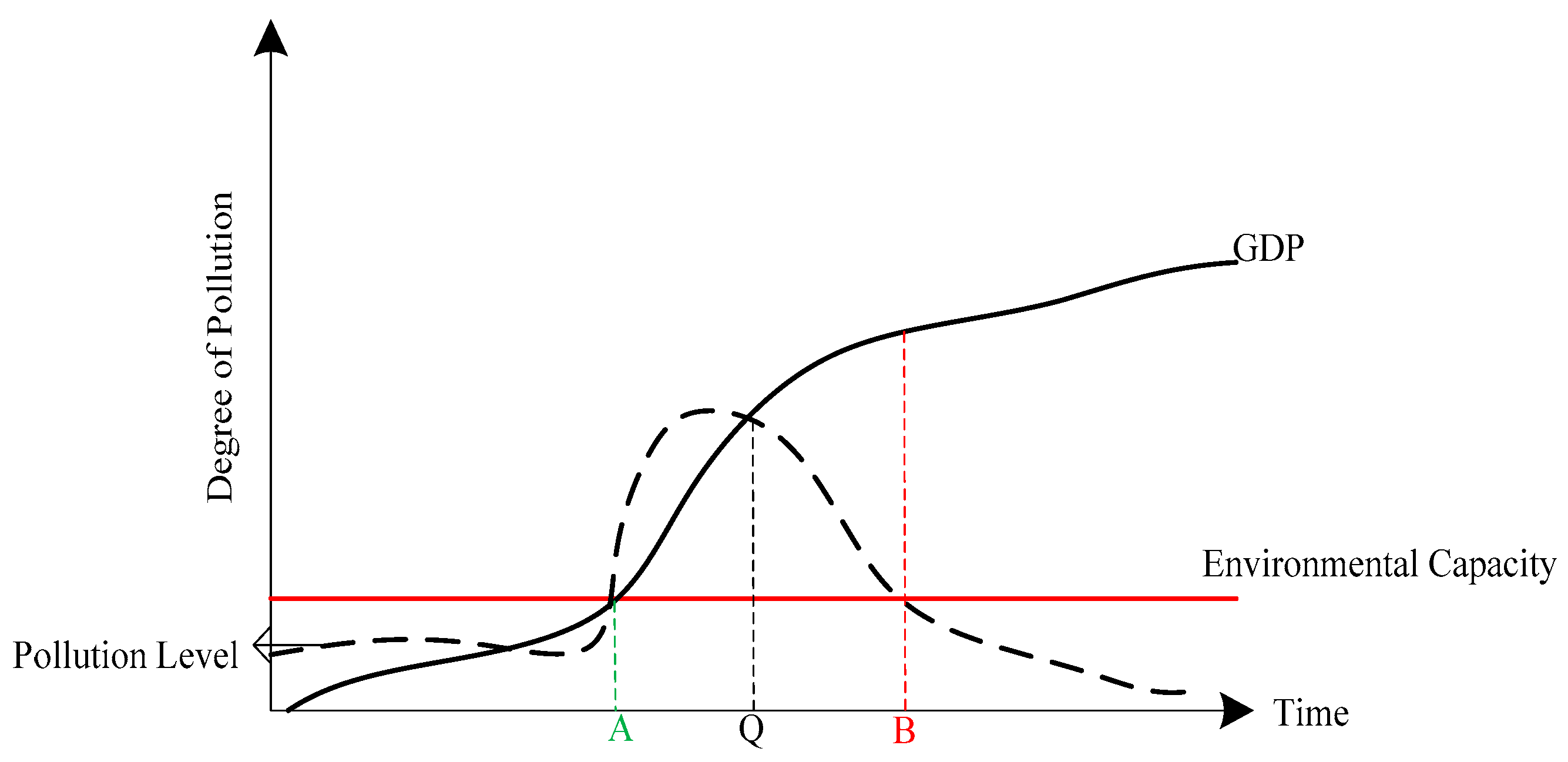
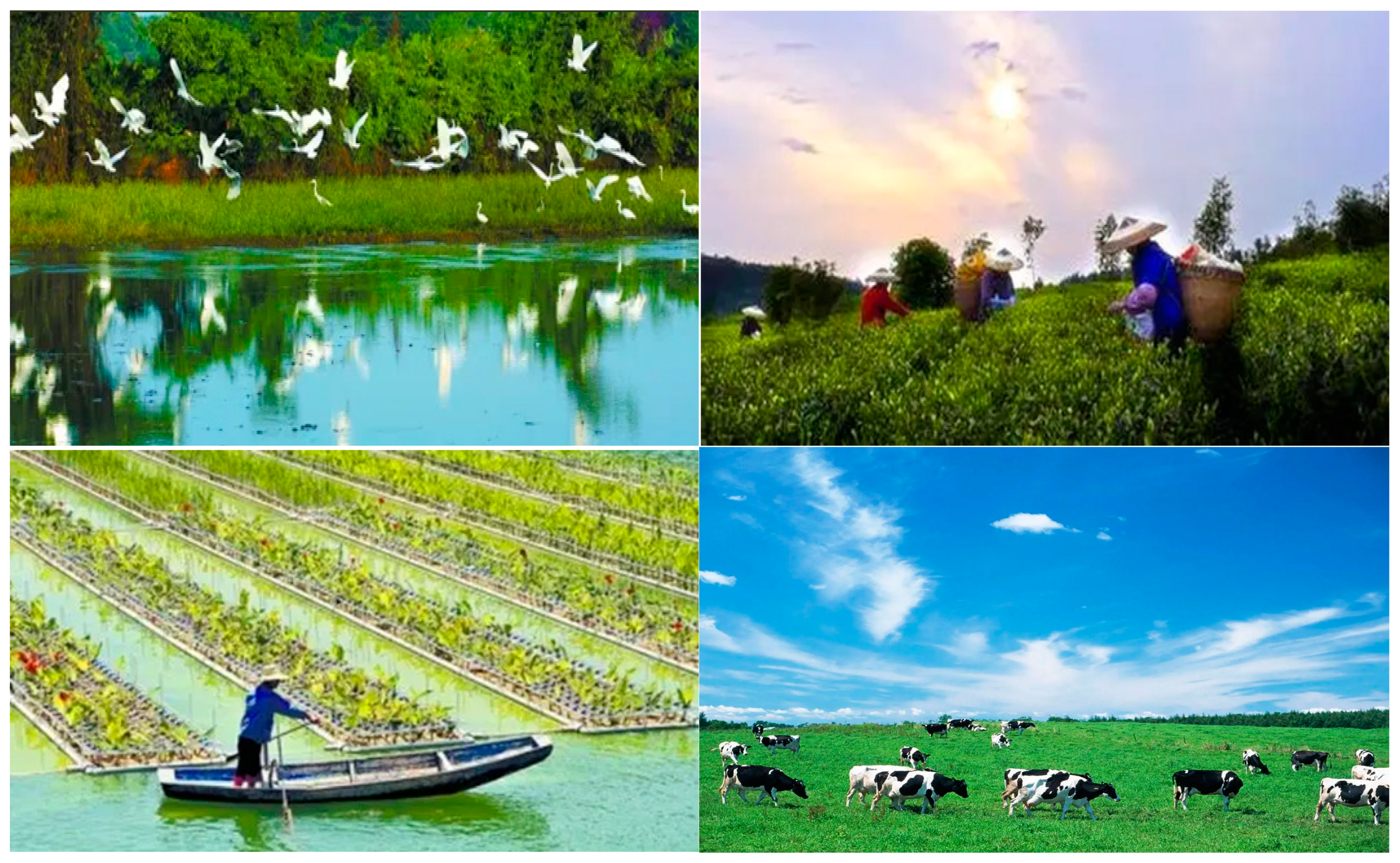
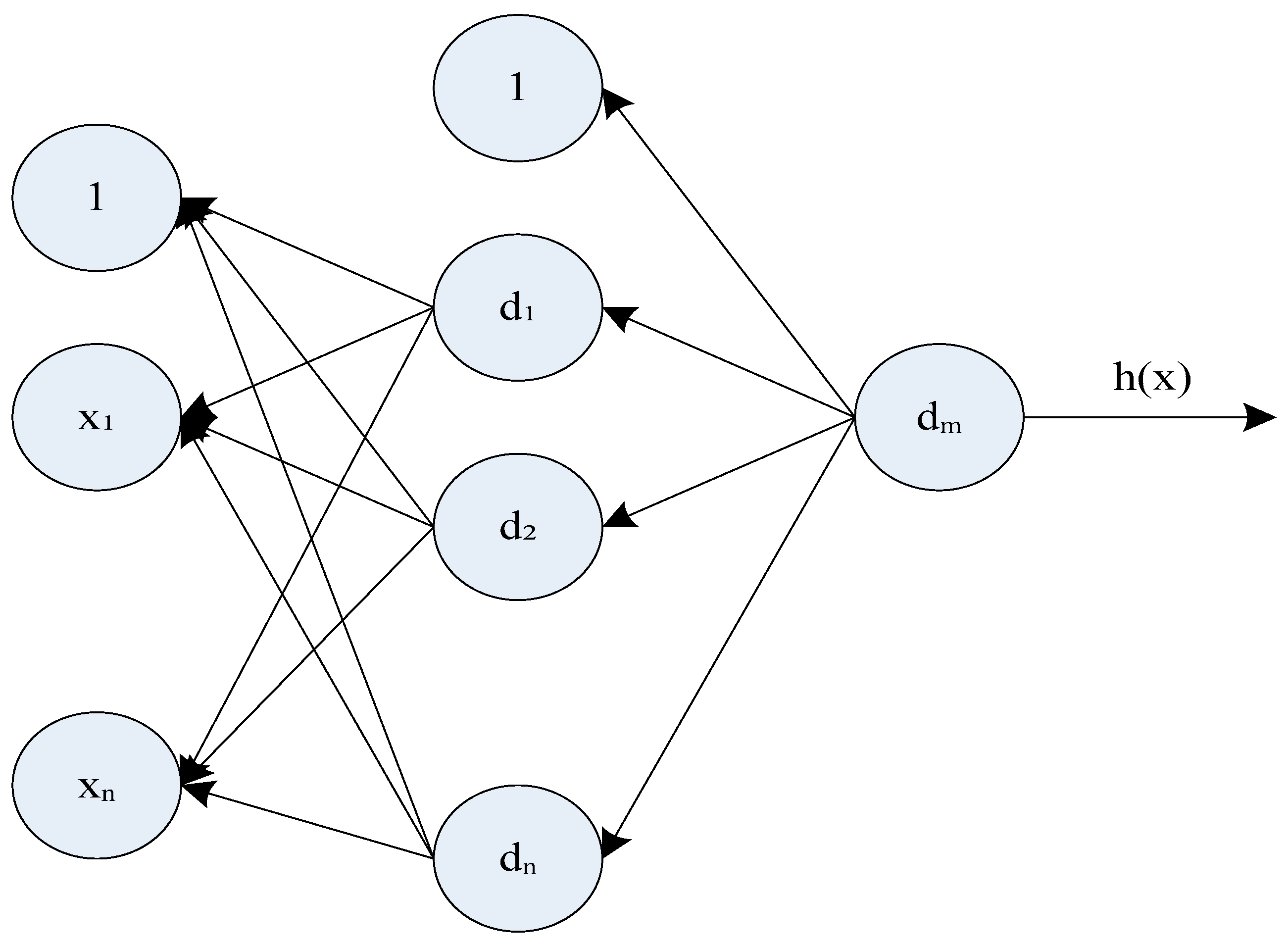
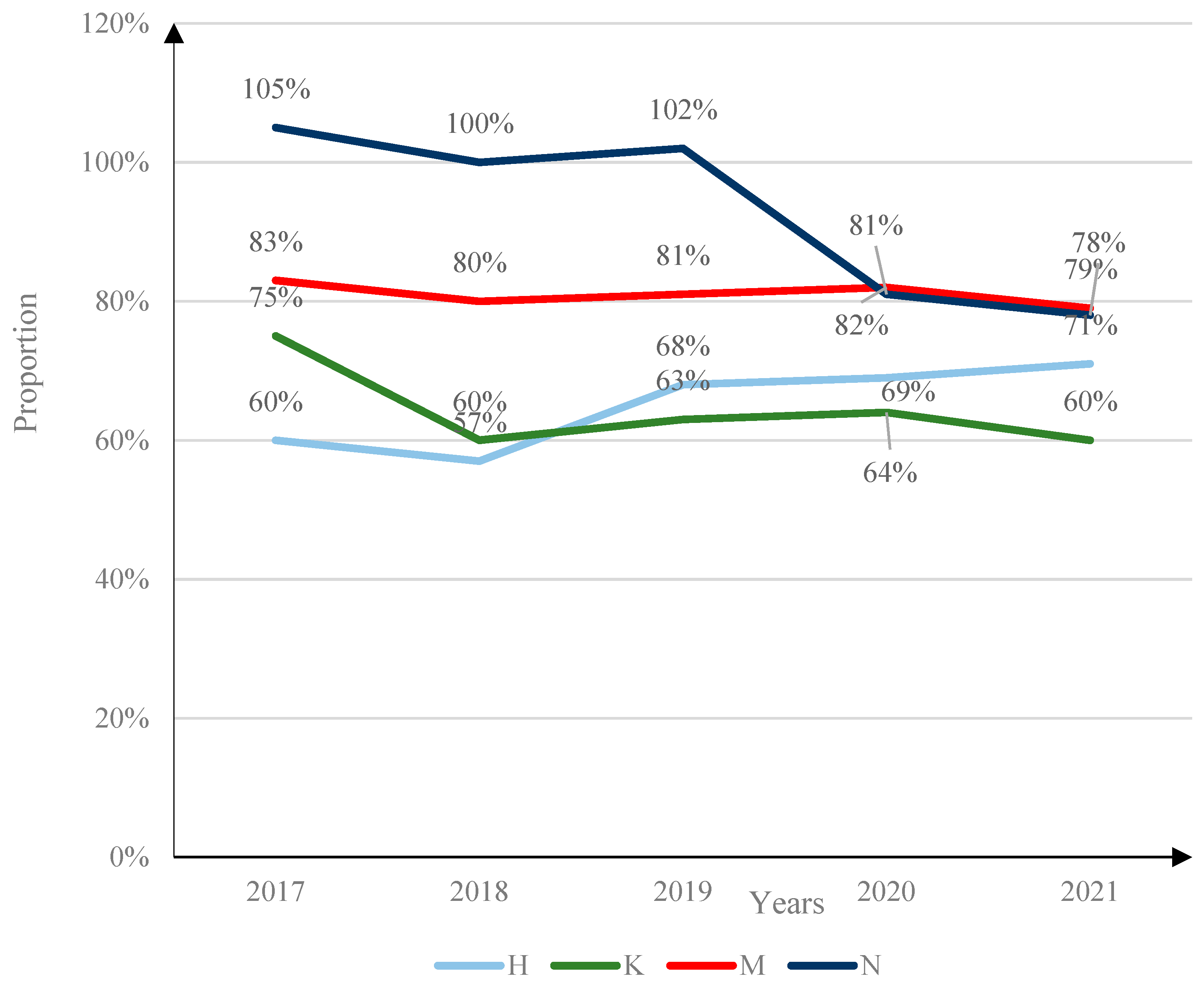
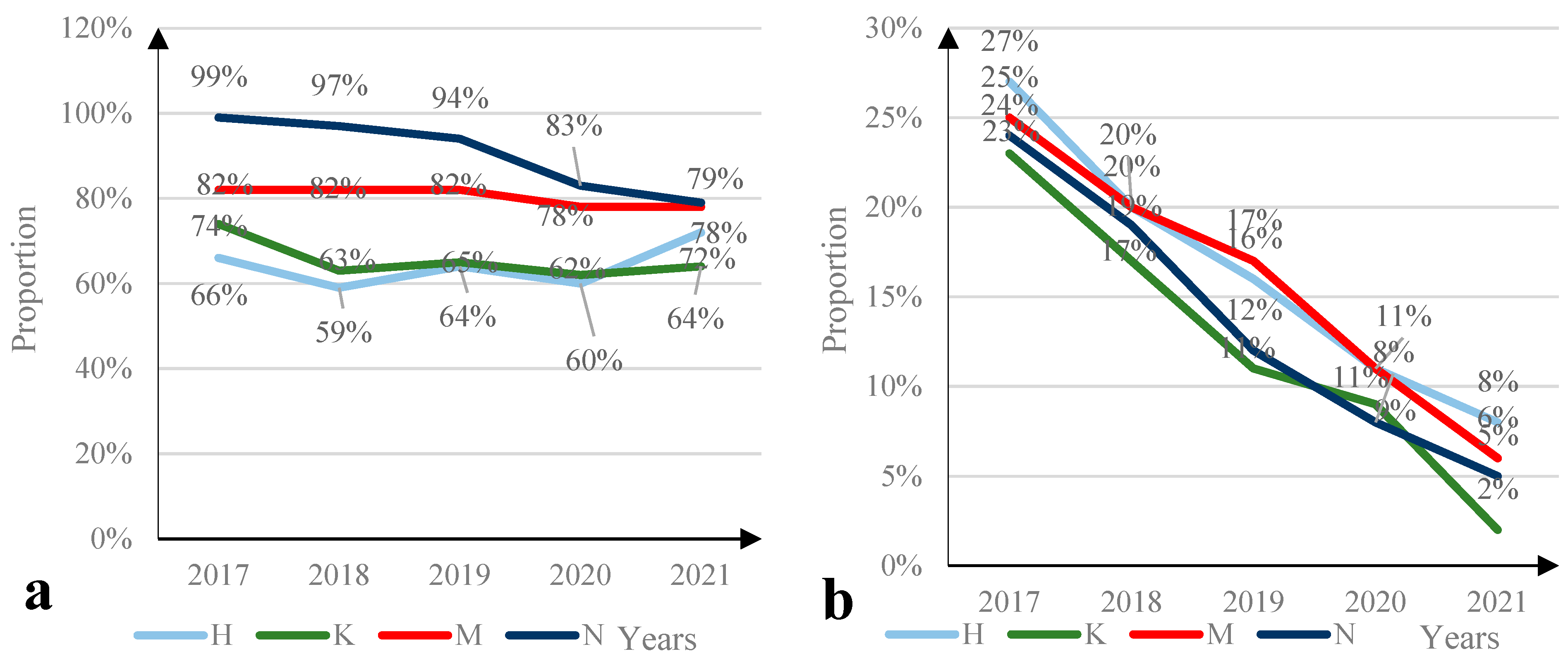
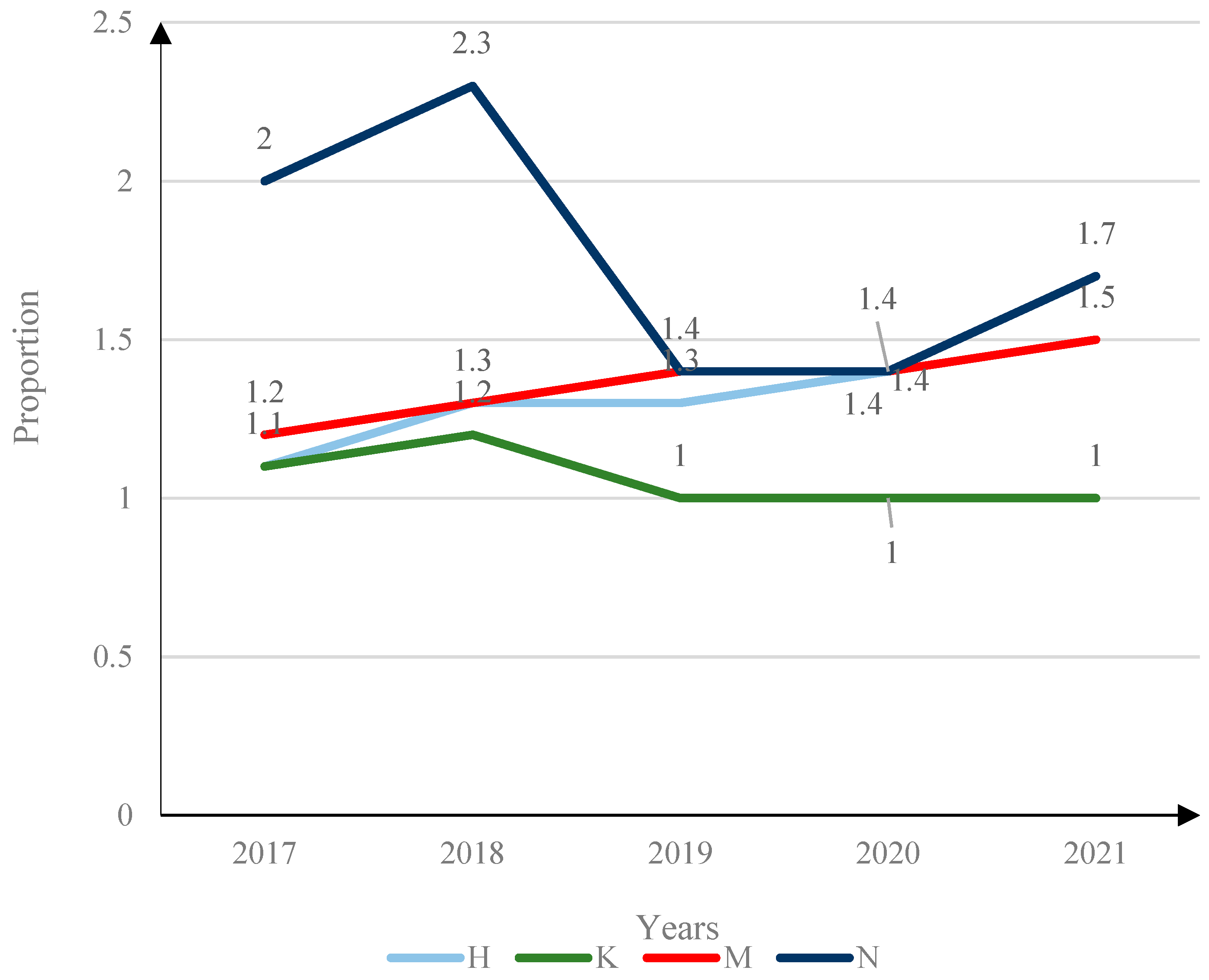

| Project | Solar Value | |
|---|---|---|
| Renewable Energy Value | Solar Energy | 5.93 × 1023 |
| Wind Energy | 7.16 × 1023 | |
| Rainwater Chemical Energy | 3.83 × 1020 | |
| Tidal Energy | 2.89 × 1020 | |
| Wave Energy | 1.77 × 1021 | |
| Total | 3.27 × 1023 | |
| Non-Renewable Energy Value | Oil | 4.23 × 1023 |
| Natural Gas | 2.40 × 1022 | |
| Total | 4.45 × 1023 | |
| Resource Energy Output | Oil | 5.20 × 1022 |
| Total | 5.20 × 1022 | |
| Project | 2017 | 2018 | 2019 | 2020 | 2021 | |
|---|---|---|---|---|---|---|
| Terrestrial Renewable Energy Value | Solar Energy | 1.54 × 1022 | 1.57 × 1022 | 1.55 × 1022 | 1.60 × 1022 | 1.42 × 1022 |
| Wind Energy | 1.74 × 1022 | 1.74 × 1022 | 1.74 × 1022 | 1.74 × 1022 | 1.74 × 1022 | |
| Freshwater Fishing | 1.25 × 1022 | 6.41 × 1021 | 6.80 × 1021 | 6.44 × 1021 | 6.90 × 1021 | |
| Total | 1.03 × 1023 | 9.29 × 1022 | 7.25 × 1022 | 9.63 × 1022 | 8.19 × 1022 | |
| Ocean Renewable Energy Value | Ocean Fishing | 2.77 × 1022 | 3.29 × 1022 | 2.91 × 1022 | 2.91 × 1022 | 2.88 × 1022 |
| Crude Salt | 3.24 × 1022 | 4.32 × 1022 | 5.11 × 1022 | 3.89 × 1022 | 4.12 × 1022 | |
| Total | 6.03 × 1022 | 7.33 × 1022 | 8.03 × 1022 | 6.80 × 1022 | 7.01 × 1022 | |
| 1.64 × 1023 | 1.65 × 1023 | 1.52 × 1023 | 1.63 × 1023 | 1.51 × 1023 | ||
| Non-renewable Energy Value | Crude | 1.19 × 1023 | 1.16 × 1023 | 1.12 × 1023 | 1.18 × 1023 | 1.37 × 1023 |
| Natural Gas | 6.96 × 1021 | 9.60 × 1021 | 1.09 × 1022 | 1.23 × 1022 | 1.21 × 1022 | |
| Electricity | 4.62 × 1021 | 2.80 × 1021 | 2.08 × 1021 | 2.56 × 1021 | 3.29 × 1021 | |
| Fertilizer | 7.27 × 1022 | 7.57 × 1022 | 7.80 × 1022 | 8.11 × 1022 | 8.53 × 1022 | |
| 2.03 × 1024 | 2.20 × 1024 | 2.96 × 1024 | 4.53 × 1024 | 6.11 × 1024 | ||
| Foreign Exchange | Input Crude Oil | 3.01 × 1022 | 7.02 × 1022 | 6.39 × 1022 | 9.26 × 1022 | 1.26 × 1022 |
| Input Natural Gas | 8.68 × 1021 | 1.00 × 1021 | 9.80 × 1021 | 1.13 × 1021 | 5.98 × 1021 | |
| Input Power | 1.02 × 1022 | 1.21 × 1022 | 1.19 × 1022 | 2.06 × 1022 | - | |
| Export Crude Oil | 6.15 × 1020 | 1.81 × 1022 | 1.91 × 1022 | - | 2.92 × 1022 | |
| Export Natural Gas | 3.28 × 1021 | 5.30 × 1021 | 6.36 × 1021 | 5.61 × 1021 | 6.98 × 1021 | |
| Output Power | 1.36 × 1022 | 3.23 × 1022 | 4.00 × 1022 | - | - | |
| Foreign Tourism | 1.13 × 1021 | 1.55 × 1021 | 1.99 × 1021 | 2.28 × 1021 | 2.91 × 1021 | |
| 1.19×1023 | 1.19 × 1023 | 1.19 × 1023 | 1.19 × 1023 | 1.19 × 1023 | ||
| 1.33×1022 | 1.82 × 1022 | 2.48 × 1022 | 5.01 × 1022 | 6.82 × 1022 | ||
| 1.54 × 1023 | 1.73 × 1023 | 2.34 × 1023 | 5.12 × 1023 | 7.11 × 1023 | ||
| 2.56 × 1024 | 2.87 × 1024 | 3.73 × 1024 | 5.63 × 1024 | 8.13 × 1024 | ||
| Waste | Waste water | 7.69 × 1022 | 6.35 × 1022 | 7.43 × 1022 | 8.85 × 1022 | 9.57 × 1022 |
| Exhaust gas | 3.42 × 1022 | 3.54 × 1022 | 4.58 × 1022 | 7.81 × 1022 | 1.39 × 1022 | |
| Solid waste | 2.41 × 1023 | 9.89 × 1022 | 5.62 × 1022 | 2.98 × 1022 | 3.18 × 1022 | |
| 3.52 × 1023 | 1.88 × 1023 | 1.76 × 1023 | 1.96 × 1023 | 2.68 × 1023 | ||
| Indicator Item | 2017 | 2018 | 2019 | 2020 | 2021 |
|---|---|---|---|---|---|
| Energy/currency ratio | 4.71 × 1013 | 4.45 × 1013 | 4.41 × 1013 | 4.48 × 1013 | 4.21 × 1013 |
| EYR | 1.94 | 1.36 | 1.64 | 1.28 | 1.07 |
| ESR | 86.92% | 80.27% | 83.57% | 78.28% | 72.76% |
| EER | 0.16 | 0.19 | 0.20 | 0.21 | 0.21 |
| ELR | 6.42 | 7.57 | 10.13 | 13.24 | 17.29 |
| ESI | 0.29 | 0.17 | 0.15 | 0.09 | 0.05 |
| EISD | 0.04 | 0.03 | 0.02 | 0.01 | 0.01 |
| Renewable energy ratio | 13.45% | 11.64% | 8.97% | 6.93% | 5.06% |
| Ratio of waste to renewable energy | 1.10 | 0.60 | 0.61 | 0.62 | 0.84 |
| Waste-to-total energy-value ratio | 13.96% | 11.62% | 8.93% | 6.92% | 5.01% |
| Energy per capital usage | 4.93 × 1016 | 5.54 × 1016 | 6.59 × 1016 | 9.28 × 1016 | 1.26 × 1017 |
| Energy density | 1.49 × 1013 | 168 × 1013 | 2.01 × 1013 | 2.85 × 1013 | 3.97 × 1013 |
| EEYR | 0.28 | 0.33 | 0.31 | 0.33 | 0.38 |
| IELR | 6.56 | 6.49 | 8.91 | 11.02 | 14.27 |
| EIRSD | 0.0434 | 0.0511 | 0.0362 | 0.0301 | 0.0267 |
| EIRSD × EER | 0.00751 | 0.01041 | 0.00754 | 0.00677 | 0.00581 |
| 2017 | 2.34 × 1013 | 6.45 × 1022 | 3.41 × 1017 | 3.45 × 1015 | 1.06 × 1024 | 1.21 × 1012 |
| 2018 | 2.46 × 1014 | 7.21 × 1022 | 3.63 × 1018 | 3.51 × 1016 | 1.99 × 1024 | 2.06 × 1013 |
| 2019 | 2.51 × 1014 | 7.96 × 1023 | 3.95 × 1018 | 3.63 × 1018 | 2.39 × 1025 | 2.19 × 1014 |
| 2020 | 2.96 × 1015 | 8.11 × 1023 | 4.04 × 1019 | 3.73 × 1019 | 2.98 × 1025 | 2.61 × 1015 |
| 2021 | 3.32 × 1015 | 8.56 × 1024 | 4.24 × 1020 | 5.64 × 1022 | 3.67 × 1026 | 2.92 × 1016 |
Disclaimer/Publisher’s Note: The statements, opinions and data contained in all publications are solely those of the individual author(s) and contributor(s) and not of MDPI and/or the editor(s). MDPI and/or the editor(s) disclaim responsibility for any injury to people or property resulting from any ideas, methods, instructions or products referred to in the content. |
© 2023 by the authors. Licensee MDPI, Basel, Switzerland. This article is an open access article distributed under the terms and conditions of the Creative Commons Attribution (CC BY) license (https://creativecommons.org/licenses/by/4.0/).
Share and Cite
Ma, L.; Liu, X. Strategies for Environmental Protection and Optimization of Ecological Business Economic Growth from the Perspective of Sustainable Development. Sustainability 2023, 15, 2758. https://doi.org/10.3390/su15032758
Ma L, Liu X. Strategies for Environmental Protection and Optimization of Ecological Business Economic Growth from the Perspective of Sustainable Development. Sustainability. 2023; 15(3):2758. https://doi.org/10.3390/su15032758
Chicago/Turabian StyleMa, Li, and Xuefeng Liu. 2023. "Strategies for Environmental Protection and Optimization of Ecological Business Economic Growth from the Perspective of Sustainable Development" Sustainability 15, no. 3: 2758. https://doi.org/10.3390/su15032758
APA StyleMa, L., & Liu, X. (2023). Strategies for Environmental Protection and Optimization of Ecological Business Economic Growth from the Perspective of Sustainable Development. Sustainability, 15(3), 2758. https://doi.org/10.3390/su15032758





